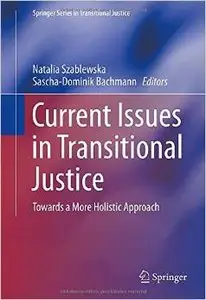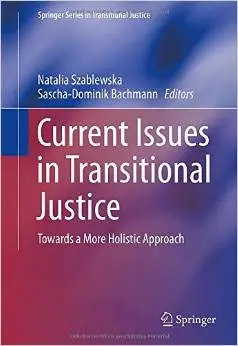Current Issues in Transitional Justice: Towards a More Holistic Approach by Natalia Szablewska and Sascha-Dominik Bachmann
English | 2014 | ISBN: 3319093894 | 376 pages | PDF | 4 MB
English | 2014 | ISBN: 3319093894 | 376 pages | PDF | 4 MB
This volume is an inter-disciplinary scholarly resource bringing together contributions from writers, experienced academics and practitioners working in fields such as human rights, humanitarian law, public policy, psychology, cultural and peace studies, and earth jurisprudence.
This collection of essays presents the most up to date knowledge and status of the field of transitional justice, and also highlights the emerging debates in this area, which are often overseen and underdeveloped in the literature. The volume provides a wide coverage of the arguments relating to controversial issues emanating from different regions of the world. The book is divided into four parts which groups different aspects of the problems and issues facing transitional justice as a field, and its processes and mechanisms more specifically. Part I concentrates on the traditional means and methods of dealing with past gross abuses of power and political violence. In this section, the authors also expand and often challenge the ways that these processes and mechanisms are conceptualised and introduced. Part II provides a forum for the contributors to share their first hand experiences of how traditional and customary mechanisms of achieving justice can be effectively utilised. Part III includes a collection of essays which challenges existing transitional justice models and provides new lenses to examine the formal and traditional processes and mechanisms. It aims to expose insufficiencies and some of the inherent practical and jurisprudential problems facing the field. Finally, Part IV, looks to the future by examining what remedies can be available today for abuses of rights of the future generations and those who have no standing to claim their rights, such as the environment.



